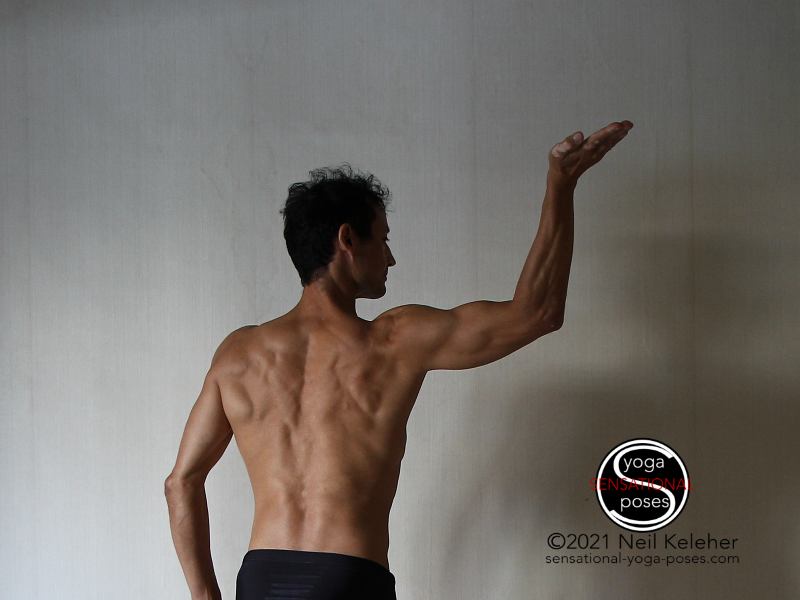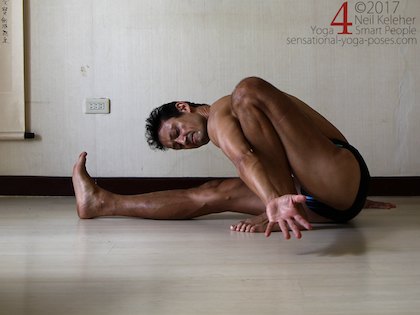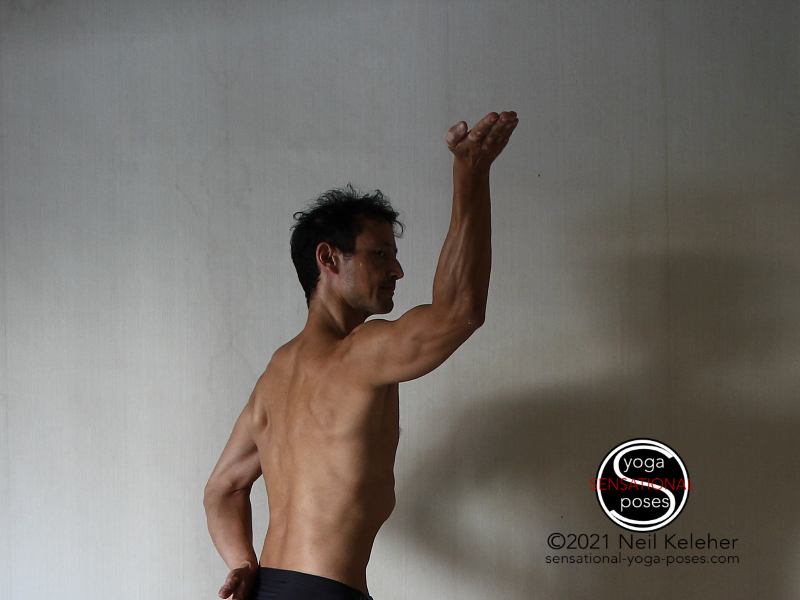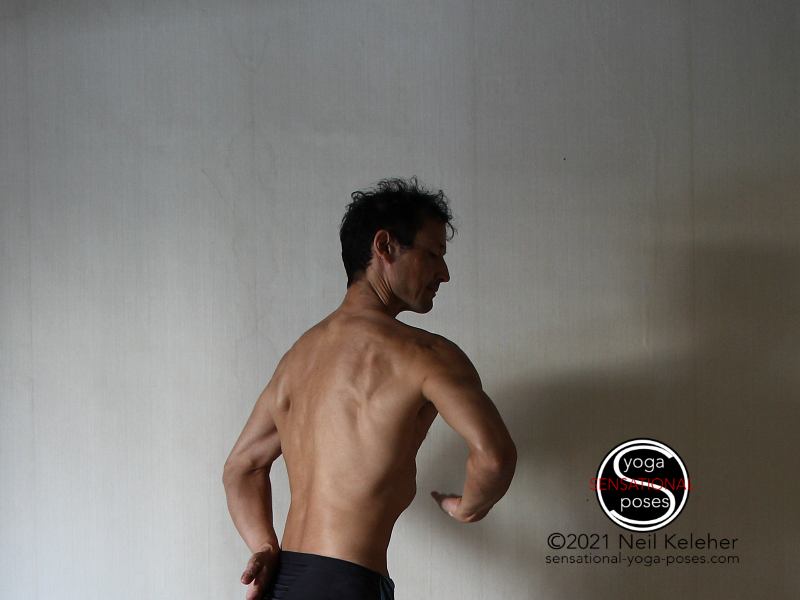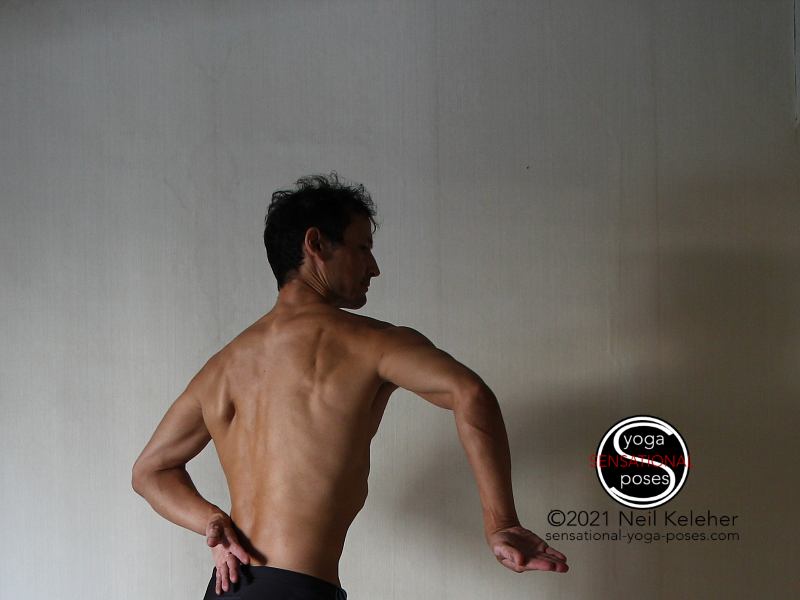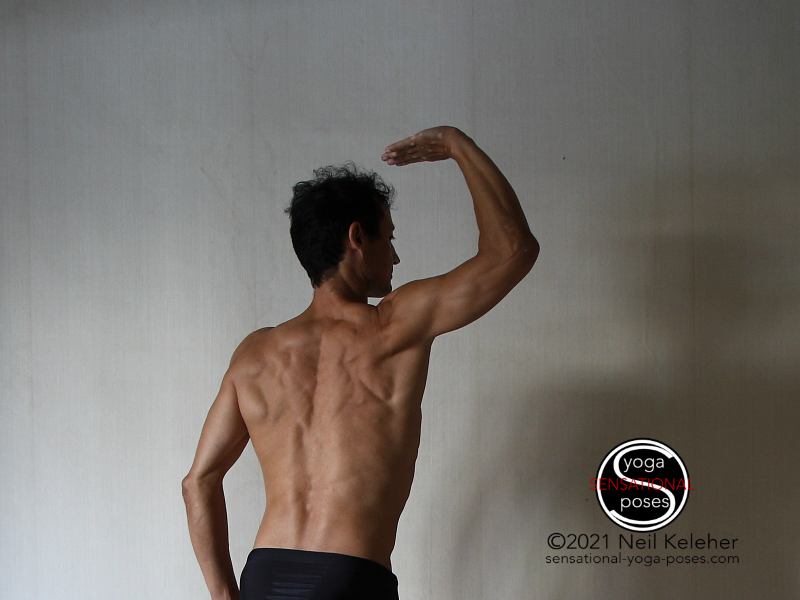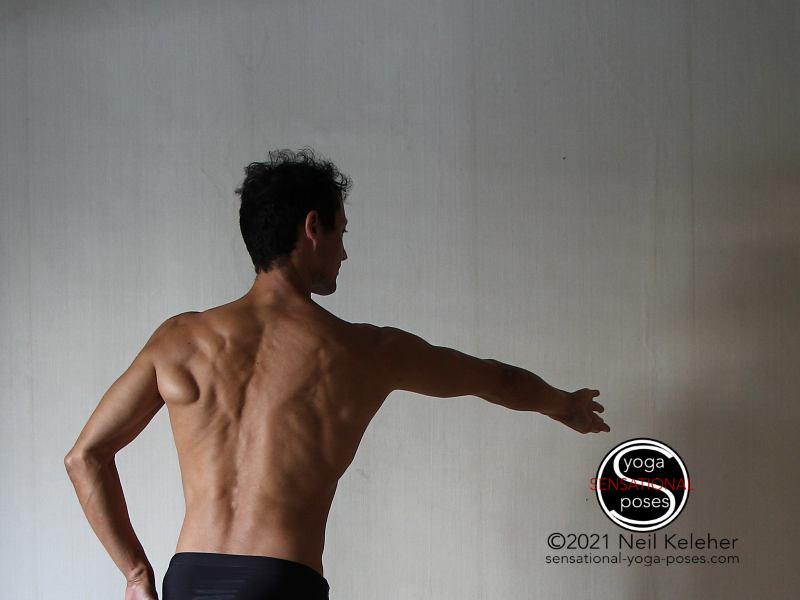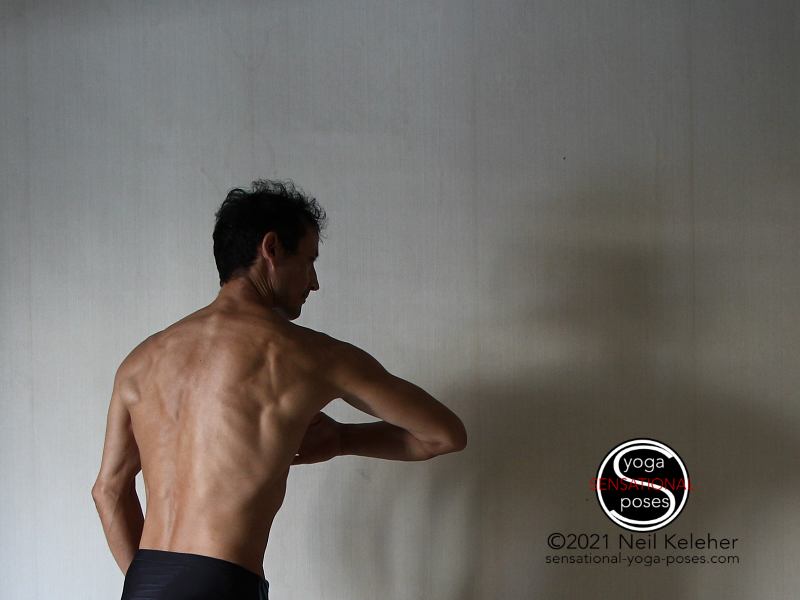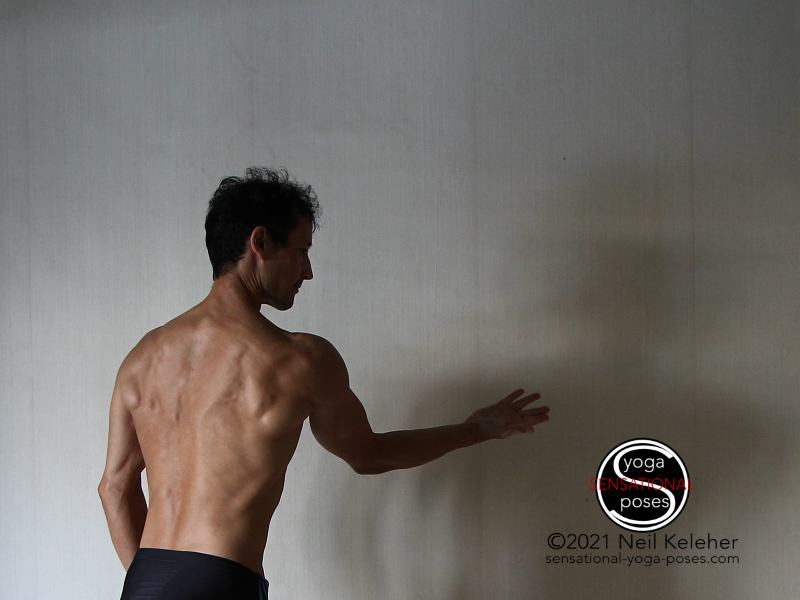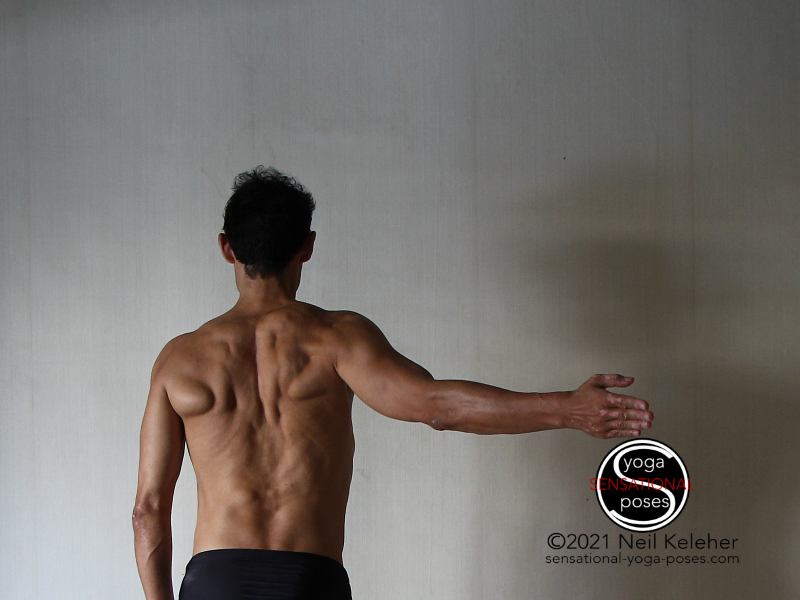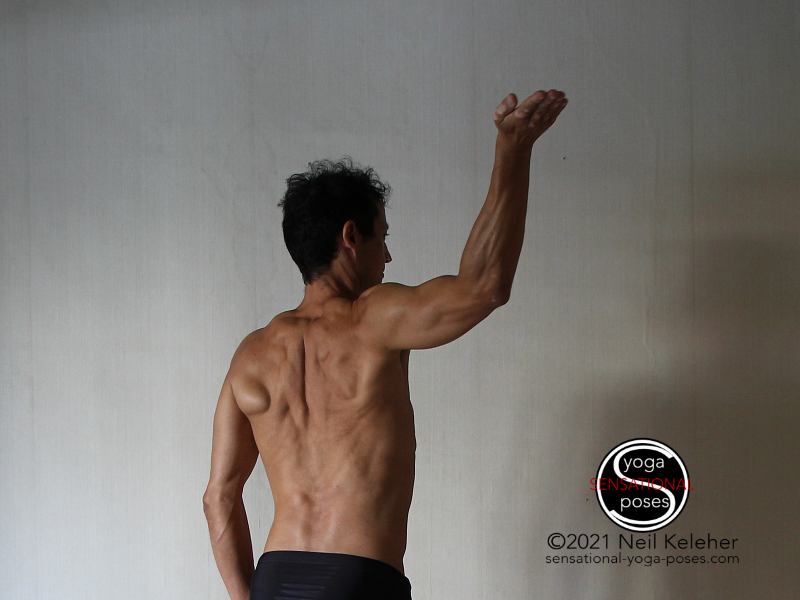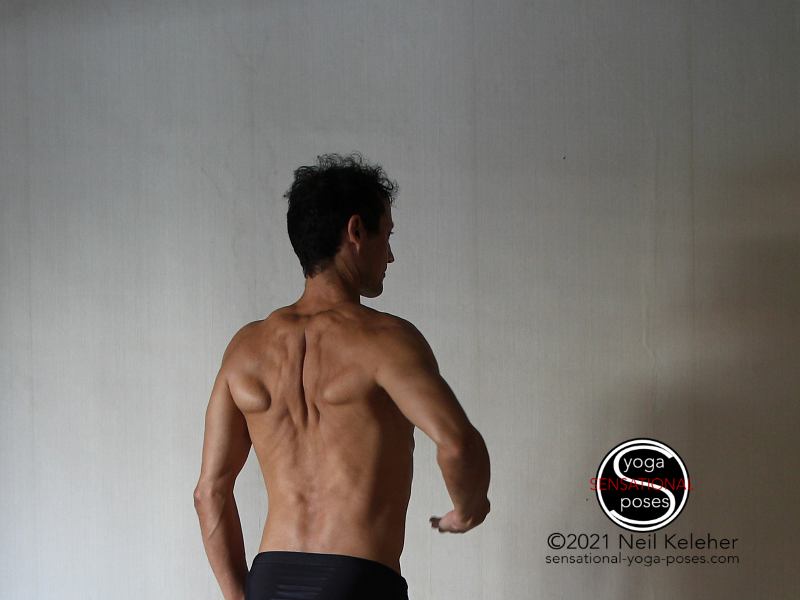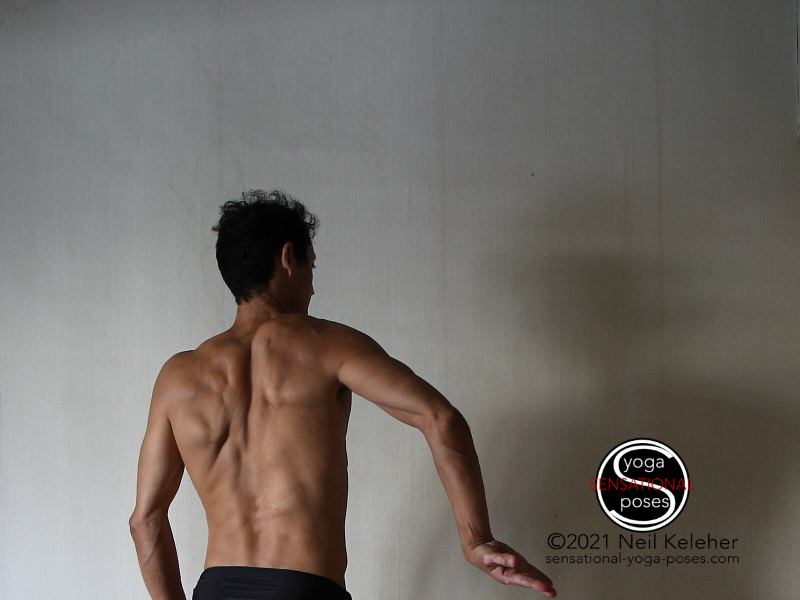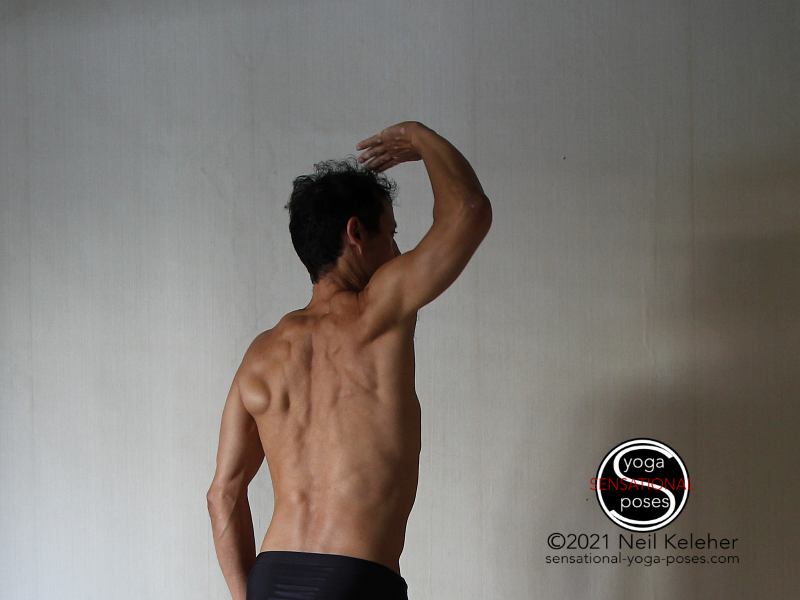Proprioception, Muscle Control and Scapular Awareness
Scapular awareness means knowing where you scapulae are (and/or what they are doing). They could be protracted or retracted, elevated or depressed. The could be retracting from a protracted position or vice versa.
Proprioception is the ability to feel your body, and it is in large part driven by muscle activity. So a large part of feeling where your scapulae are in relation to your ribcage (and in relation to each other) is feeling the muscles that move and stabilize them relative to the ribcage and relative to the arms.
Muscular activity and connective tissue tension are the sensations that you can notice and use to "feel" where your scapulae are.
The Difference Between Stabilization and Control
Muscular stabilization occurs when opposing muscles work against each other to stabilize a joint.
When muscles aren't working against each other to stabilize the scapula (relative to the ribcage) they may be working against the weight of the arms. This could be thought of as control.
This is particularly noticeable when the arm (or arms) is held overhead. To keep the arms (and shoulder blades) lifted the muscles of the shoulder blade and arm have to work against the weight of the arm itself, preventing it from sinking down.
Both stability and control require muscle control. In one instances muscles work against each other, in the other instance against body weight or other forces.
Both are actually pretty close to the same thing, the distinction is useful however to differentiate between when muscles work against each other as opposed to working against some external force (including body weight).
Creating a Stable Base for Arm Control
Arm control is made easier if the scapular stabilizers and shoulder muscles have a stable base from which to work. One way you can provide this is by making the ribcage firm and rigid.
Lengthening for Better Controllability
Arm control is also made easier when the muscles doing the controlling have the necessary length to contract. An analogy is a rubber band. When you stretch it it can pull inwards and do work.
With muscles, they need to be lengthened in order to have room to contract. And so to this end it can help to lengthen the neck so that the muscles that elevate the scapulae have room to contract. Depending on what the arms are doing, it may also help to protract the shoulder blades or retract them scapular and shoulder muscles room to contract.
Control Requires Awareness
To lift the arms overhead it can help to elevate the shoulder blades. However, once elevated, rather that just forgetting the shoulder blades you can work at keeping or maintaining the lifting effort.
In this case the upper and middle Trapezius works against the weight of the arm to create control.
To reach the arms forwards, it can help to protract the shoulder blades. However, once the arms are forwards, you can work at keeping the shoulder blades protracted.
To keep the shoulder blades protracted the serratus anterior muscle works against the weight of the arm helping to control the shoulder blade.
Muscle Stability and Control Create Similar Sensations
One reason why the difference between stabilization and control may not be important is that they both create similar sensations. In both what you can learn to feel is muscle activation. Additionally that muscle activation gives you a sense of how your bones currently relate via joints, whether muscles are working against each other or against an outside force.
One thing to note if you are trying to work your body in a balanced manner is that with stabilization, both sides of a joint are strengthened. With control, only the muscles on one side are strengthened. So with the latter, working on control, you should make sure that you do exercises to strengthen both sets of muscles.
Stabilizing the Scapulae while Binding
In a non-dance of shiva context, scapular control can be important when working at binding in poses like Marichyasana A.
In binding yoga poses like this you have to reach an arm forwards. This is aided by protracting the shoulder blade of the reaching arm. You then have to reach it to the side (keeping the protraction) and then rotate the arm inwards.
So that the muscles that rotate the arm inwards have a stable base from which to work you may find it helps to keep the shoulder blade protracted. So rather than just rotating the arm inwards and ignoring the shoulder blade, rotate it inwards while focusing on keeping the shoulder blade protracted.
This may count as stabilization since you are providing a base from which the rotational muscles can act effectively.
The important thing here is to focus on feeling your shoulder blade via the muscles that work on it.
Stabilizing the Shoulder Blades While Doing Dance of Shiva Arm Movements
A dance of shiva arm movement that is similar is the transition from position 1 to position 2 and from position 2 to position 3.
Position 1 and Position 2.
Position 3 and Position 4. (Note, it is not a requirement of the Dance of Shiva that you do it whie wearing a bathing suit!
A Note on Dance of Shiva Position Terminology
In the pictures above I've using one arm. Generally Dance of Shiva is done with both arms at the same time.
Both of these transitions (from position 1 to 2, then from position 2 to 3) involve inwardly rotating the arm. But to give the internal rotators a stable base, focus on keeping the shoulder blade protracted.
(For position 3, this may be easier if you do it initially with the elbow straight.)
Note the goal here isn't to keep the shoulder blade absolutely still. You keep it protracted but allow it to adjust to account for the changes in arm position.
It's a lot like dancing with a partner. You want to maintain the relationship not strangle it. So you keep just enough tension to maintain the relationship while at the same time allowing the movements that express the dance.
And that's a general guideline for stabilizing parts of your body. Try not to create to much rigidity. Allow your body to adjust but stay connected to it by continually feeling it.
The Advantages of Dance of Shiva for Practicing Scapular Awareness and Control
One of the advantages of dance of shiva for practing scapular awareness and control is that you can practice stabilizing your scapulae in a wide variety of positions while you do the movements. Thus you practice not only being aware of your hands, but your shoulder blades (and your ribcage and neck) as well.
Four other arm positions are shown below.
Dance of Shiva Arm Positions A, B, C and D, all while trying to protract the shoulder blade.
Note the difference between working to protract and protracted. In the last dance of shiva arm position the shoulder blade is retracted, but even so I'm trying to protract it.
Creating a Balanced Scapular Control Practice
Getting back to the idea of balance, if you practice dance of shiva arm positions and movements with the shoulders protracted then you should also work at doing the same movements with the scapulae retracted.
Below you can see the first four Dance of Shiva arm positions done with shoulder blades retracted.
Published: 2017 11 17
Updated: 2021 03 07
